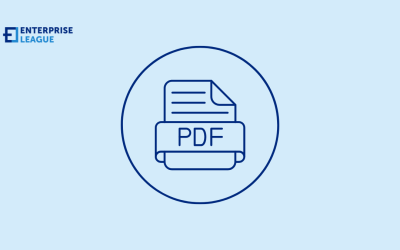This guide will explore the ins and outs of cash flow management, focusing on strategies specifically tailored for small businesses. When combined with modern payroll systems for small businesses, these strategies can ensure a healthy financial outlook and sustainable growth.
Understanding cash flow dynamics
Small businesses must focus primarily on managing their operating cash flow. It’s imperative to grasp the concept of the cash conversion cycle, as it precisely measures the duration required for inventory to be converted into sales and, subsequently, into cash. A shorter cash conversion cycle means faster access to cash, which can be reinvested or used to cover expenses. By monitoring this cycle, businesses can identify bottlenecks and streamline their operations for improved cash flow.
Accurate financial forecasting
Accurate financial forecasting is akin to navigating with a well-drawn map. It provides a clear path for your business, allowing you to anticipate financial challenges and opportunities. To enhance this skill, consider employing financial modelling techniques. This involves creating a comprehensive economic model that incorporates various scenarios, such as best-case, worst-case, and most likely outcomes. By doing so, you can prepare for potential fluctuations in cash flow and adjust your strategies accordingly.
Streamlining accounts receivable
Expense control and optimisation
Expense control and optimisation are essential aspects of managing cash flow effectively. Regularly reviewing your expenses is akin to pruning a tree—it promotes growth and sustainability. Start by categorising expenses into fixed and variable categories. Expenses that are fixed, like rent or salaries, remain constant, while variable expenses, such as office supplies or marketing costs, fluctuate. Analyse variable expenses closely to identify areas where cost-cutting measures can be applied without compromising quality.
Moreover, negotiations with suppliers can yield cost-saving opportunities.
Building a cash reserve
Creating a cash reserve is akin to building a financial safety net for your business. This reserve serves as a buffer against unexpected expenses or economic downturns. You should allocate a percentage of your profits regularly to fund this reserve. While the specific amount can vary based on your business’s needs and industry, having at least three to six months of operating expenses in reserve is a prudent goal.
Efficient inventory management
Efficient inventory management is especially critical for businesses that deal with physical products. Excessive inventory ties up capital and storage space, while insufficient inventory can result in missed sales opportunities. Employing inventory management software can revolutionise this aspect of cash flow management.
Another effective strategy is implementing the Just-In-Time (JIT) inventory system, where inventory is ordered and received just in time for production or sales. This minimises carrying costs and reduces the risk of obsolete inventory. JIT can be particularly advantageous for small businesses looking to improve cash flow and reduce storage expenses.
Exploring financing options
Ensure the financing aligns with your cash flow management goals and doesn’t create an unsustainable debt burden. Adequate financing can provide a temporary cash infusion to cover operating expenses or fund strategic initiatives, ultimately contributing to your business’s financial stability.
By using a range of practical strategies and leveraging modern payroll systems for small businesses, entrepreneurs can navigate the financial ebbs and flows, ensuring the sustainability and growth of their enterprises.
Understanding the intricacies of cash flow dynamics and adopting accurate financial forecasting methods provides a solid foundation for decision-making. Streamlining accounts receivable and controlling expenses are essential steps in optimising cash flow. Building a cash reserve is a safety net in uncertain times, and efficient inventory management prevents capital from being tied up unnecessarily.
Exploring financing options when needed allows businesses to seize growth opportunities without compromising their financial stability. It’s all about finding the right balance and managing resources wisely.
With these strategies in place and the assistance of payroll systems tailored for small businesses, entrepreneurs can steer their companies towards financial prosperity. In this ever-evolving business landscape, where adaptability and financial resilience are key, effective cash flow management becomes a powerful tool for success.
More must-read stories from Enterprise League:
- The golden rules you need to build a steady buyer-seller relationship.
- What it takes to start a wholesale business from scratch?
- Best marketing tools for startups that are worth trying.
- Inspiring quotes about supporting small businesses.
- Entrepreneurs over 70 that have defiled old age.
Related Articles
How direct lenders simplify mortgage processes for homebuyers
Eliminating the requirement for intermediaries, direct lenders are changing housing market by offering effective practices that simplify mortgage acquisition.
PDFs and the debate between tradition and innovation
Curious about the future of PDF? Learn about its integration with new technologies and explore some practical PDF tips to leverage all the power of this format!
The 10 Ds of entrepreneurship: Why are they important?
Are you familiar with the 10 Ds of entrepreneurship? Let’s see if you possess some or all of them that will launch you for success.
How direct lenders simplify mortgage processes for homebuyers
Eliminating the requirement for intermediaries, direct lenders are changing housing market by offering effective practices that simplify mortgage acquisition.
PDFs and the debate between tradition and innovation
Curious about the future of PDF? Learn about its integration with new technologies and explore some practical PDF tips to leverage all the power of this format!






